As fully discussed in VPN Encryption: The Complete Guide, OpenVPN is the go-to VPN protocol (at least for commercial VPN services). And rightly so. OpenVPN is a community-supported open source software that is primarily developed by OpenVPN Technologies, Inc.
Pros:
- Can be used with any OpenVPN service
- Full DNS leak protection (both IPv4 and IPv6)
- Full IPv6 routing
- WebRTC protection
- Open source
Cons:
- No kill switch
- Slightly harder setup
In addition to the OpenVPN protocol itself (backend), the community has developed a stand-alone open source graphical user interface (GUI) front end –OpenVPN GUI.
Most VPN services these days offer custom OpenVPN clients. These always use the open source OpenVPN backend (the protocol itself), and are almost always based on a modified version of the open source OpenVPN GUI client. Sometimes heavily skinned (modified), sometime only slightly so.
Price
As free and open source software (FOSS), OpenVPN GUI is free in every sense of the word. Do please be aware, however, that in order to use it you must either subscribe to a commercial VPN service or setup our own private OpenVPN server.
OpenVPN GUI, as such, is only available for Windows. MacOS users can instead use open source Tunnelblick, while Android users have OpenVPN for Android by Arne Schwabe (also open source). A non-GUI open source OpenVPN client is available for Linux (sudo apt-get install openvpn).
The OpenVPN 2.4 GUI Features
In the past, Open GUI was a very basic piece of software that was sorely lacking in features. It got you connected, and that was about it.
Recent versions (2.4x) of OpenVPN GUI, however, have improved dramatically in terms of important features.
- Full DNS leak protection (both IPv4 and IPv6)
- Full IPv6 routing
- WebRTC leak protection
Simple edits to the OpenVPN configuration (.ovpn) file allow for a high level of customisation (if supported by your provider). This includes port selection, cipher and cipher bit-length selection, and the choice of running OpenVPN over UDP or TCP.
This last allows you to run OpenVPN over TCP port 443, which is a great way to defeat censorship blocks (although horribly inefficient from a technical standpoint).
Pretty much every VPN service provides OpenVPN configuration files that can be used by OpenVPN GUI. This means that you always have the option to use OpenVPN GUI instead of a provider’s custom software (if it has any).
OpenVPN GUI vs. custom OpenVPN clients
Custom OpenVPN clients offer two main advantages over OpenVPN GUI:
- They are slightly easier to set up, as you do not need to separately download and import OpenVPN configuration (.ovpn) files.
- They often provide additional features that are not available in OpenVPN GUI.
It should be noted, though, that OpenVPN 2.4.3 GUI now includes the most important features that were once only available via custom software - DNS and WebRTC leak protection. Indeed, OpenVPN GUI fully supports IPv6 routing, which is something that no custom client yet does (with the exception of Mullvad’s).
Arguably the most useful feature offered by custom clients but not OpenVPN GUI is a kill switch. Other more useful features include SSH/SSL tunnelling, obfsproxy support, and VPN over Tor. Easy port selection is also a handy (rather than manually having to edit rather intimidating OpenVPN config files).
Custom clients can also much prettier and user-friendly than OpenVPN GUI, whose interface can most charitably be described as functional.
Custom client update issues
A big advantage of OpenVPN GUI over custom clients is that it always uses the most up-to-date (and therefore secure) version of OpenVPN. This cannot be said for all custom clients.
In addition to this, many custom clients are based on older versions of OpenVPN GUI. Unless added as part of the customization, this means that they may not support more recent OpenVPN GUI features such as DNS and WebRTC leak protection.
As providers update their custom clients to incorporate the new open source OpenVPN GUI code, we should see better support for these features (and full IPv6 routing) going forward,
Open Source
OpenVPN GUI is open source. With the notable of exceptions of AirVPN and Mullvad, most providers’ custom OpenVPN clients are closed source (despite being based on the open source OpenVPN code).
In general, I always recommend using open source software. Imperfect as it is, open source is the only guarantee possible that software does not contain any malicious code.
To be honest, though, I do not consider this to be a major issue when it comes to VPN software. A VPN provider can always monitor what you get up to online when using its service anyway, so worrying about compromised software seems rather like shutting the barn door after the horse has bolted to me. Your mileage may vary.
That said, I do believe in supporting open source software on principle.
How to use OpenVPN GUI for Windows
- Download the Windows installer software and install.
![Install from site]()
As always with open source software, you should verify the download’s digital signature.
- Visit your VPN provider’s website and download its OpenVPN configuration files. Each .ovpn file usually relates to a single VPN server. It is often possible to either download individual .ovpn files or download them in bulk as a zip file (this depends on your provider).
- Move or unzip the downloaded .ovpn files to C:\Users\User\OpenVPN\config or C:\Program Files\OpenVPN\config.
![]()
Alternatively, for individual .ovpn files, you can right-click the icon in the Notification Bar -> Import file...
![importing a file right click]()
- To start the VPN, run OpenVPN GUI and right-click the icon in the Notification Bar -> Connect -> select server -> Connect. Or just select Connect if you have only imported a single .ovpn file.
![connect to VPN]()
- Some services provide personalised OpenVPN configuration files that include your username and password. If not, then you will need to enter your username and password.
You are now connected to the OpenVPN server. If you want to check, visit ipleak.net, where you can also reassure yourself that you have no IP leaks.
![Windows taskbar showing openvpn working]()
The screen area of the OpenVPN GUI Notification Bar icon turns green to show that you are connected
disconnect from the VPN right-click the icon in the Notification Bar -> Connect -> select server -> Connect.
![Disconnect from VPN]()
The Settings window allows you to play around with some basic settings…
![]()
To change more advances settings, however, you need to edit the .ovpn configuration file (Edit Config). It is best to consult your VPN provider about this.
Conclusion
I loved
- Lightweight
- Free
- Full DNS leak protection (both IPv4 and IPv6)
- Full IPv6 routing
- WebRTC leak protection
- Open source
- Always uses most up-date version of OpenVPN
- Can be used with any VPN service that supports OpenVPN (almost all of them)
I wasn’t so sure about
- Setup involves a couple of extra steps
- Looks quite basic (some custom clients are much prettier!)
- No kill switch
I hated
- Nothing
OpenVPN GUI is a great little OpenVPN client. Some smaller and newer VPN services have yet to develop their own custom software and so use OpenVPN GUI instead. This absolutely fine – as I say, OpenVPN GUI is a great little OpenVPN client
If your VPN service does offer a custom OpenVPN client, should you use it or OpenVPN GUI? I would say that it depends whether the custom software offers features not found in OpenVPN GUI that you can’t live without. Such as a kill switch.
All else being equal, though, OpenVPN GUI is a lean and mean VPN client that always uses the most up-to-date version of OpenVPN.
1 User Reviews
Leave a Review
Thanks for your review!
1 Comment
Write Your Own Comment
Your comment has been sent to the queue. It will appear shortly.

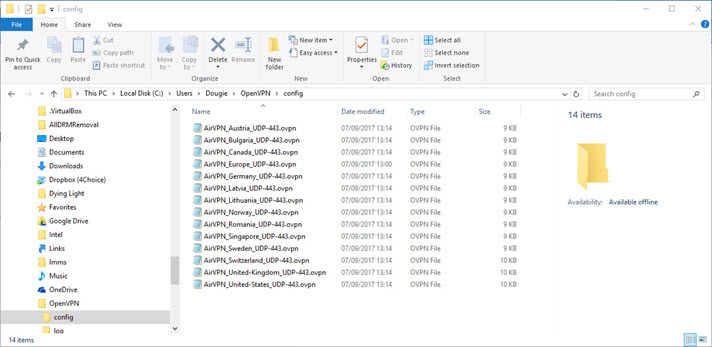
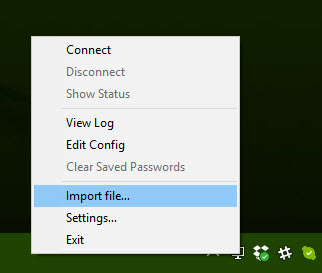
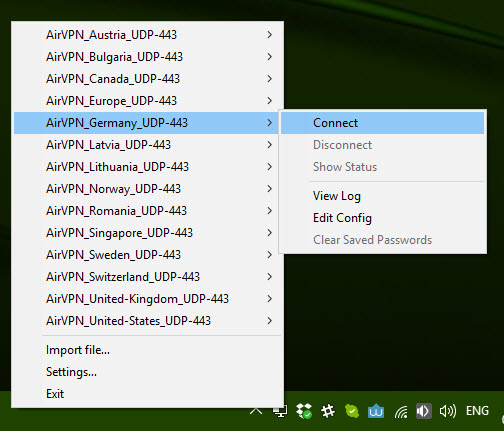

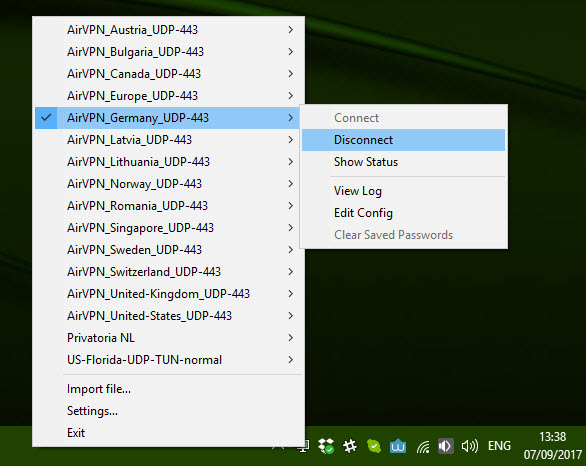
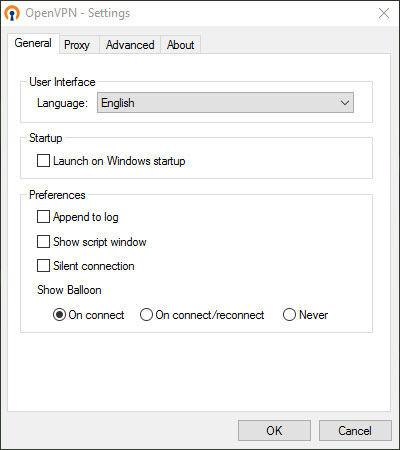

Lay Rami